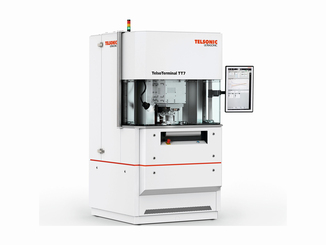
Quality is one of the most important success factors for companies. However, what is meant by this has changed over time. Whereas a number of years ago it was sufficient in automation technology to develop technically mature, durable products that reliably fulfilled their function, today companies have to think and live quality more comprehensively. The quality concept must be consistently implemented not only during the manufacturing process, but also before and after. If this is successful, this quality culture becomes an important competitive factor for companies, as the example described above shows.

© Telsonic
The Swiss Telsonic Group has been represented with industrial ultrasonic systems in Europe, America and Asia since 1966. Continuous innovation and high-quality products “made in Switzerland” have helped the ultrasonic experts to gain a technical lead in many applications. “To ensure that this remains the case in the future, however, it is no longer enough to adhere to the familiar quality standards,” reports Daniel Schmid, Head of Management System at Telsonic. And this despite the fact that the company has continuously invested in quality. The ultrasound specialist’s quality management has once again been certified in accordance with ISO 9001:2015, the core objective of which is to create trust in the products and services and thereby increase customer satisfaction.
“However, the requirements continue to increase, and quality today needs to be considered in many different ways and extended to all areas, from development concepts to topics such as sustainability, production conditions at our suppliers and environmentally friendly recycling of systems,” Daniel Schmid continues. The established quality and process management systems, as well as methods such as Kanban or 6S Lean, create an important basis for this, but are not enough.
Quality starts in development
At Telsonic, quality awareness begins at a very early stage of development, i.e. when the idea for a new system is born and is still in its infancy. Agile concepts with all the tools available for this purpose support a situation-dependent, flexible approach, which means that current and future market requirements can be implemented better than a few years ago and often even faster. One example is the Telso Terminal TT7 ultrasonic metal welding system, the latest development from the ultrasonic specialists.
Daniel Schmid recalls: “This is a completely new system, for which we dealt intensively with customer requirements from the outset in order to develop not just a product, but a comprehensive application solution.” The developers therefore looked at the upstream and downstream processes, for example how the components are fed in and how they are handled after processing. The focus was on the question of how integration into the user’s process can be optimized and simplified at the same time, and how the mechanics, communication interfaces and operating software can be designed accordingly. The effort has paid off, because today the ultrasonic welding system can be easily and smoothly integrated into a wide variety of production lines, especially in the automotive industry, a quality feature from which the user benefits decisively, because he can in turn better implement his own quality standards.
Behind it are people

© Telsonic
“However, this only works if the employees in the specialist departments identify with such a situation-specific approach and understand what this has to do with our company’s quality standards,” continues Daniel Schmid. He sees himself as a coach who conveys the complex idea of quality and continuously improves the structures, procedures and workflows with the teams. Communication with employees, mutual respect, suitable working conditions and the opportunity for further training are key issues in this context. Only then can a continuous improvement process be realized. “Digitalization also plays an important role here, as it is the only way to guarantee traceability in the production process of an ultrasonic system, for example,” adds Daniel Schmid.
Sustainability is another focal point of a company’s quality culture. Here, the ultrasound experts rely on a standardized sustainability report. Daniel Schmid adds: “It is to be expected that the topic of sustainability will become more concrete with the revisions of the ISO 9001 and ISO 14001 standards. However, standards alone should not be the motivation to address this issue, but it should be the DNA of every company to make a contribution within the scope of its possibilities.
Digital system solution for ultrasonic metal welding
With the development of the new Telso Terminal TT7 for ultrasonic metal welding, Telsonic AG has demonstrated its commitment to product development and innovation. The new system is designed to simplify and expand the application possibilities of ultrasonic metal welding in a wide range of areas, particularly in the rapidly growing e-mobility sector, where the demand for the highest level of quality and process control is increasing, in cable assembly and contact part assembly as well as in battery production.
The Telso Terminal TT7 works with the proven PowerWheel welding technology, which offers maximum reliability and process control when welding metal cables with cross-sections of up to 200 mm². Other benefits include the TT7’s new quick-change system, which enables tool changes in less than five minutes. The system also has standardized interfaces for digital networking and easy integration into production systems.
Authors:
Ellen-Christine Reiff
Alex Homburg
Web:
www.telsonic.com

